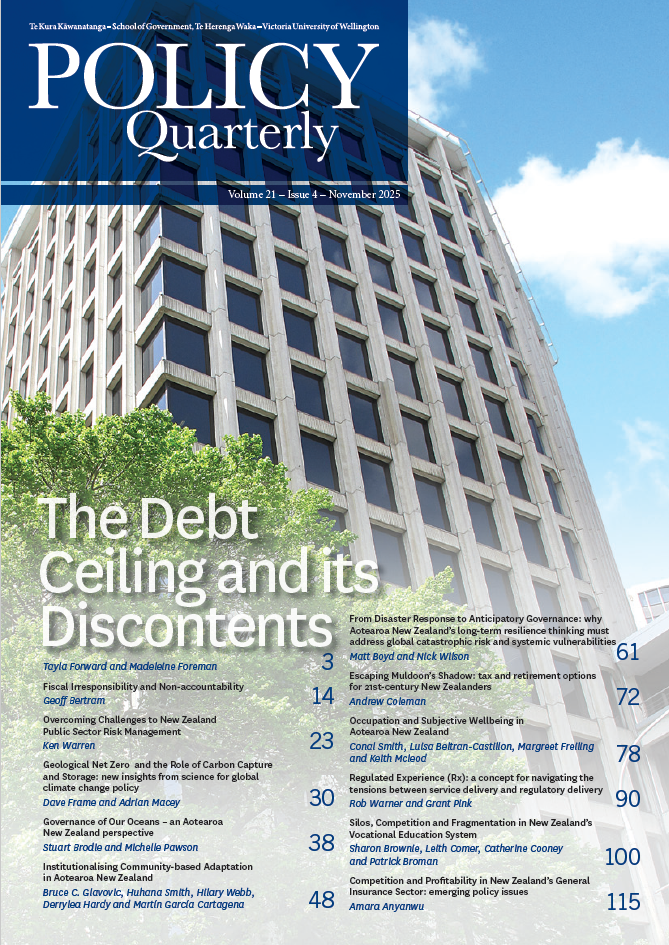The Debt Ceiling and its Discontents
DOI:
https://doi.org/10.26686/pq.v21i4.10325Keywords:
fiscal sustainability, debt ceiling, public investment, fiscal credibility, sovereign debtAbstract
This article challenges the New Zealand Treasury’s 2022 recommendation of a 50% debt-to-GDP ceiling, arguing that the analysis undertaken does not justify the recommendation, and that it contains structural biases favouring fiscal restraint over productive investment. We demonstrate that the Treasury’s conservative assumptions about the macroeconomic environment for debt consolidation, combined with excessive shock buffers, lack sufficient analytical justification. Replicating Treasury’s analysis with more realistic assumptions yields substantially higher sustainable debt levels. We discuss the asymmetric treatment of fiscal risks, where debt costs are precisely quantified while the benefits of public spending and risks of underinvestment are treated as secondary or speculative. We argue for balanced fiscal frameworks that recognise both excessive debt and chronic underinvestment as threats to sustainability.
Downloads
Downloads
Published
Issue
Section
License
Permission: In the interest of promoting debate and wider dissemination, the IGPS encourages use of all or part of the articles appearing in PQ, where there is no element of commercial gain. Appropriate acknowledgement of both author and source should be made in all cases. Please direct requests for permission to reprint articles from this publication to Policy-Quarterly@vuw.ac.nz.



